Presentation
Occupational exposure with dyspnea
Patient Data
Age: 55 years
Gender: Male


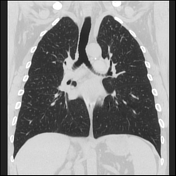

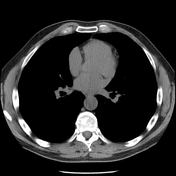

Download
Info
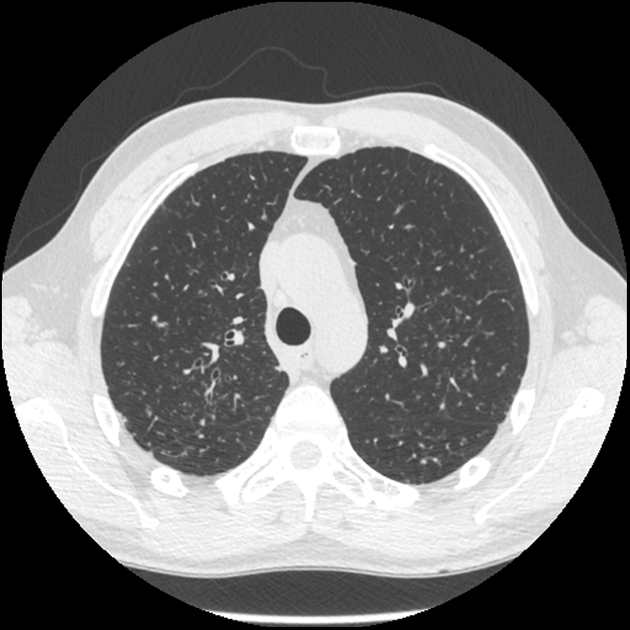
Multiple micronodules, upper lobe predominant. No calcified mediastinal lymph nodes.
Case Discussion
The patient gave a history of exposure to silica particles as an occupational exposure in the past.
The findings of innumerable micronodules with predominant upper lobe affection, associated with the provided history of occupational exposures make simple silicosis the most probable diagnosis, though coal workers' pneumoconiosis and talcosis could give very similar radiological findings.


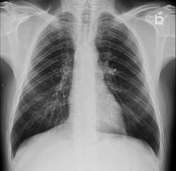
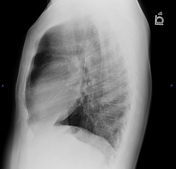
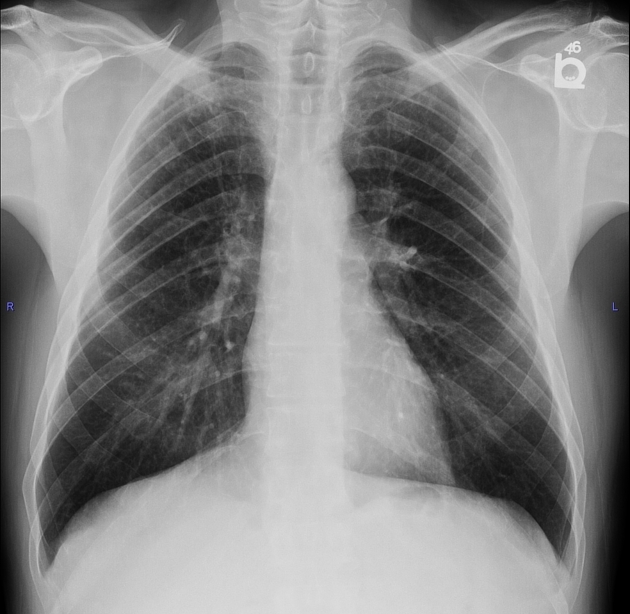


 Unable to process the form. Check for errors and try again.
Unable to process the form. Check for errors and try again.